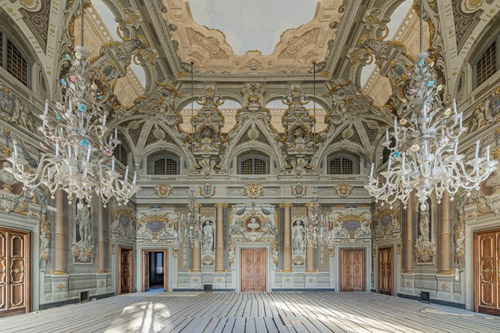
Florence’s historic Palazzo Serristori gets revamp
Newswire
Rome: It was the last home of Joseph Bonaparte, the brother of Napoleon, the kind of Spain and Naples, who took refuge there, and it was also the residence, again in the 19th century, of the Demidoff family of Russian nobles whose name is given to the square it looks onto.

But Florence’s Palazzo Serristori, originally a Renaissance villa on the banks of the Arno, not far from Ponte Vecchio, also played host to Medici pontiff Pope Leo X – whose coat of arms is in the main entrance – Puccini, Rossini, Lord Byron, Shelley, Richard Strauss and Wagner.
Queen Elena of Italy stayed there often too: her lady in waiting was Marques Hortense de la Gandara, who was married to Count Umberto Serristori, whose family had the palace built and lived there until the second half of the last century.
After a long spell without tenants, Palazzo Serristori is now set to host extra-luxury homes.
Acquired in March by Taiwan’s LDC residences – which was previously engaged in Florence with the renovation of another historic building, Palazzo Portinari Salviati – it will be revamped with a major restoration that will start in the spring and see high-class apartments created inside.
The prices of the future homes will go from two to seven million euros and Lionard Luxury Real Estate will handle the sales exclusively.
The renovation entails an investment of tens of million euros and Italian companies and the local area will be involved in the project for several years.
Palazzo Serristori spreads out over an area of 5,500 square metres of interior space and it has a 3,000-square-metre garden.
It was built at the start of the 16th century by Lorenzo Serristori to show how important the family of bankers, loyal allies of the Medici, had become. It was constructed on the site of a hunting lodge at the bottom of the hill of the current Piazzale Michelangelo, looking out onto the Arno in the area of the ‘mulina’ (the ‘mill’ and, indeed, the remains of a million can still be seen in the basement).
Experts say that, on the basis of the documents found in the Serristori archive, it is presumable that the architects who created the original core of the building were Giuliano and Antonio da Sangallo together with Benedetto da Maiano.
According to some scholars, the beautiful spiral staircase that still connects the basement to the top floor is attributable to Michelangelo.
The residence can also lay claim to having the city’s largest ‘giardino all’italiana’ (Italian garden).
It underwent a major transformation in the period in which Florence was the capital of Italy: for the construction of a new ‘Lungarno’ river front taking the Serristori name, part of the park and the palace were expropriated.
However, original elements survived the centuries and changes in taste, starting from the magnificent frescoed ballroom, the biggest in Florence at 250 metres in wide and 12.5 metres high and over 150 metres of foyer (which is destined to be the communal area for all of the future apartments) built in the 17th century when the building was extended under the Buontalenti.
Still perfectly intact and in their place in the hall are two splendid 18th-century Murano chandeliers, as is the original wooden flooring. Likewise the ‘Sala degli Specchi’ (hall of mirrors), the residence’s fireplaces made out of precious marble with the coat of arms of the Serristori and the terracotta stove with glass made by Ginori: there is only one other like it in the world.
Other fascinating features of the historic building include some secret passageways, one of which, partially uncovered, connected the palace to the other bank of the Arno.
